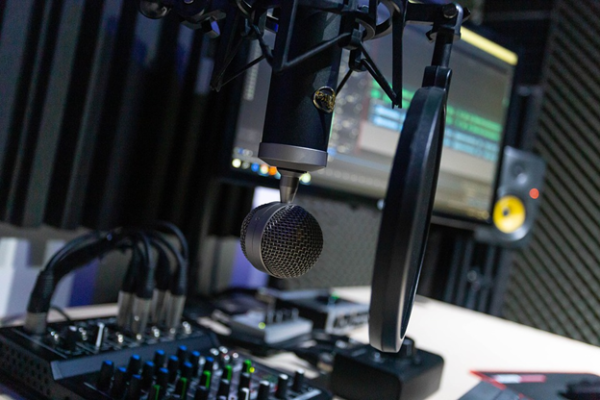Podcasts are increasingly becoming popular. In line with recent research, more than 90 million Americans listen to podcasts every month, which has increased the popularity of podcasts by nearly 180% in the last five years.

They are easy to create, they are useful, and above all, they provide a broad audience. If you own a business, you would like to reach many people without breaking a bank, and that’s why you should create podcasts. If you have never created podcasts before, read our step by step guide to know how you can start an excellent podcast for your business.
Gather the Recording Equipment and Software
Assemble quality recording equipment to enhance the audio quality of our podcast. Though some devices like iPhones, Android devices, and computers can have their integrated audio recording systems, most of them may not produce the required audio effect. You need to invest in a quality microphone attachment for quality purposes. You will also need editing software to remove the audio flaws and save it in the mp3 format. After that, you should select a hosting platform. As seen in these hosting reviews, there are many hosting platforms, which include a speaker, audacity, transistor, adobe audition, and much more. Select the best, depending on your audio preferences.
Choose Your Theme and Format
The theme refers to the topic of your podcast. It should be comprehensive enough to tell the listeners what to expect in the podcast. The theme should also revolve around something you are passionate about or a product you are offering. Ensure that you have a good flow on your chosen theme to ensure consistency in your podcasts. Note that your listeners/ customers will turn away if they identify inconsistency in your episodes. After choosing your theme, you need to decide how to pass the information to listeners and keep them engaged. That is where the podcast format comes in handy. You may choose to present it in an interview style, solo style, and narration style. Additionally, you may decide to use several hosts or a combination of several styles.
Prepare the Podcast
After the above two steps, the next essential thing is preparing the podcast. Podcast preps include everything from cover art to the content itself. First, you will need to select your cover art. It should be appealing to attract the attention of potential listeners. You can get ideas about the cover art by copying from various Apple podcasts. Alternatively, you can hire a professional to design one for your work. The second thing is to edit the name of your podcast and then draft the podcast description. While describing your podcast, use as many keywords as possible to increase your search engine ranking. The final thing is working on the arrangement of your podcast. To create some flow, present your podcast into categories and subcategories. A good flow combined with consistent podcasts is enough to retain your listeners.
Record and Edit Your Podcast
It’s now time to use the recording equipment and software you had assembled earlier. Here, we will be specific on how to record a podcast using a computer. First, ensure that you have downloaded recording software on your computer. Secondly, attach a USB microphone to your computer. Ensure that the microphone is the default recording device in recording software and then start recording.

Don’t be mindful of the pronunciation errors, as the software will polish everything. After recording, save your recorded audio in mp3 format. The mp3 format will allow you to compress the audio easily. The format is also compatible with numerous devices compared to other formats. Proceed to remove the dead air gaps and the recording mistakes by editing. Editing will also allow you to add intro, outro, and stabilize the volume. The idea is to make the audio clear and precise.
Host Your Podcast
After editing the audio, the next essential thing is to host it. You will need a separate host for your audio, since shared web hosts may have speed issues for downloads and online streaming. The good news is that most media hosts are affordable, and you can choose one from the many available options. After uploading at least one of your episodes, your media host should issue your RSS feed. The RSS feed should contain all your podcast’s work, including the episode titles, titles, artwork,mp3 location, description, and so on, which you will submit to your most preferred podcast directories.
Now that you have all it takes to create high-quality podcasts, you can move on and create podcasts on the topic of your choice. You can even make the creation of podcasts your career. The good thing about podcasts is that they are more effective than written or display advertising since one only needs to listen to the content.





